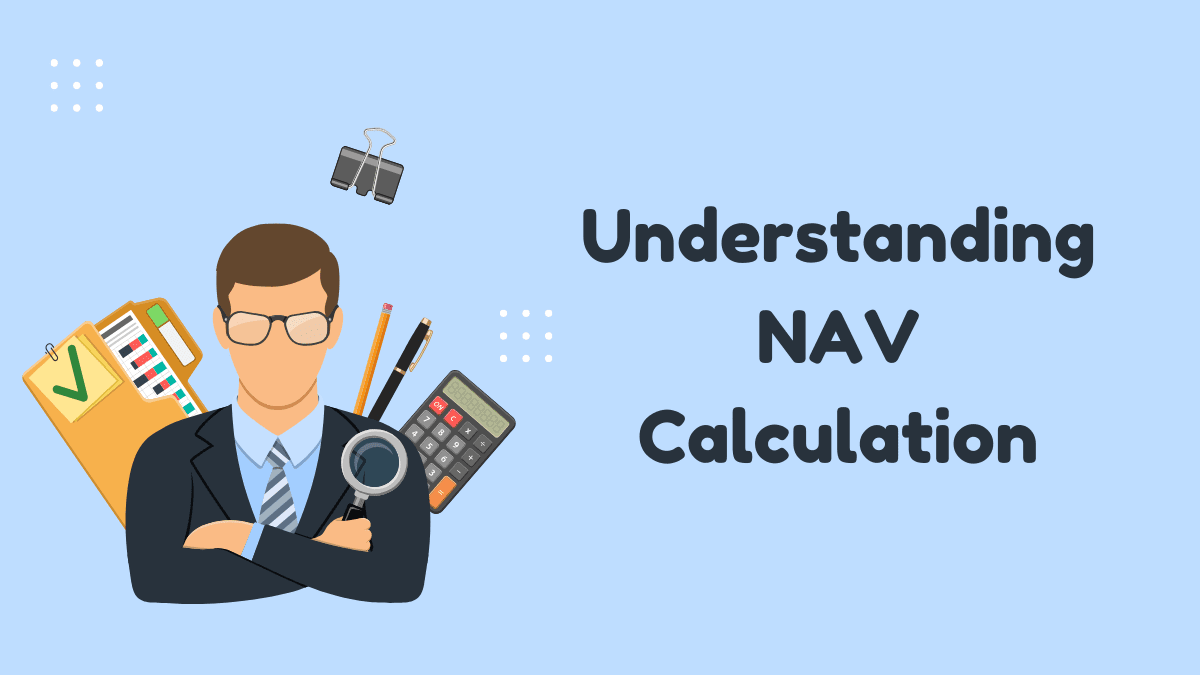Table of Contents
Last updated on September 1st, 2025 at 04:24 pm
If you are interested in investing in mutual funds, then it is important to consider their net asset value (NAV) before buying. Notably, NAV lets you know about the price at which you can buy the units of a fund. Generally, net asset value indicates how a mutual fund has performed in the past. Read ahead to know more about NAV calculation.
What is Net Asset Value?
Mutual funds comprise several units that are held collectively by different investors. The price of each unit is referred to as net asset value. Reflecting a fund’s overall performance, the NAV of a mutual fund keeps on changing. And, this fluctuation is not based on demand and supply elements of the market, but the book value of assets.
For open-end mutual funds, net asset value is calculated daily when the market closes at the end of each day. On the other hand, NAV for closed-end funds is usually calculated weekly or monthly.
It is to be noted that NAV is calculated and declared by the mutual fund house. Also, this value varies from one fund to another as it is dependent on factors like the fund size, the returns it generates, and the assets it is invested in. Further, if the net asset value is low, then you can get more mutual fund units compared to a higher NAV for the same amount of investment.
Understanding Mutual Fund NAV Calculation
The popular question, “how to calculate NAV of a mutual fund,” has a simple answer. The NAV calculation formula is:
NAV = (Total Assets-Total Liabilities)/Total Units
Here, total assets mean the market value of all the securities in a portfolio. Also, it refers to the investments made in the mutual fund scheme. This would include bonds, equities, debentures, dividends and the interest accrued. Also, the value of assets may not get affected by market fluctuations.
Simply put, total assets = value of all the assets under the scheme + cash holdings
Further, total liabilities are taken as the expenses incurred by the fund house/management or the remuneration paid to the fund manager. Also, they consist of the amount owed towards outstanding payments, foreign liabilities or money payable to lenders. Additionally, liabilities can include short- and long-term commitments.
In short, it can be represented as:
Total liabilities = payable money/interest (other liabilities) + expense ratio/fund management fee
Besides, during mutual fund NAV calculation, total units indicate all the units held by all the investors in a scheme.
Relevance of NAV for Investors
As the nature, assets and liabilities of every mutual fund scheme are different, it is vital to focus on profitability and ignore the daily changes in NAV. Additionally, NAV is not comparable amongst mutual funds.
Acting as a cost per unit in a mutual fund on a particular day, NAV holds immense relevance for investors while buying or selling. Also, fluctuations in NAV over the years can offer a sense of direction in which the fund is moving towards.
Conclusion
Considering the simple formula of NAV calculation, it can be stated that net asset value is the function of the total value of the assets in a mutual fund scheme, the cost borne by the asset management company for managing the scheme, and the scheme’s outstanding units. Also, it is advised to consider the NAV of a mutual fund as a trendline, reflecting how it started and where it has come.
If mutual funds and other investment options interest you, then you can also make a career as a financial advisor and work with large corporations and government entities. So, begin your journey to success with one of the reputable investment banking courses in India. Connect with Imarticus Learning to explore its Certified Investment Banking Operations Professional (CIBOP) programme.

